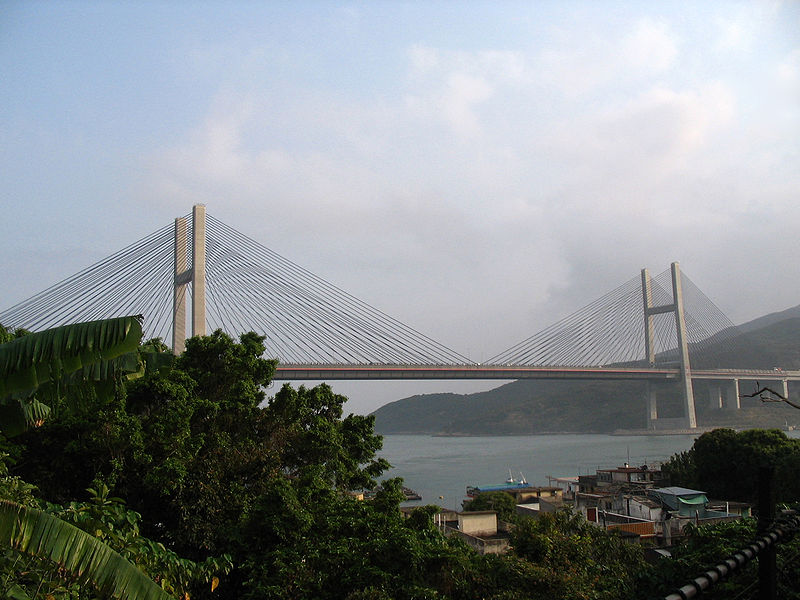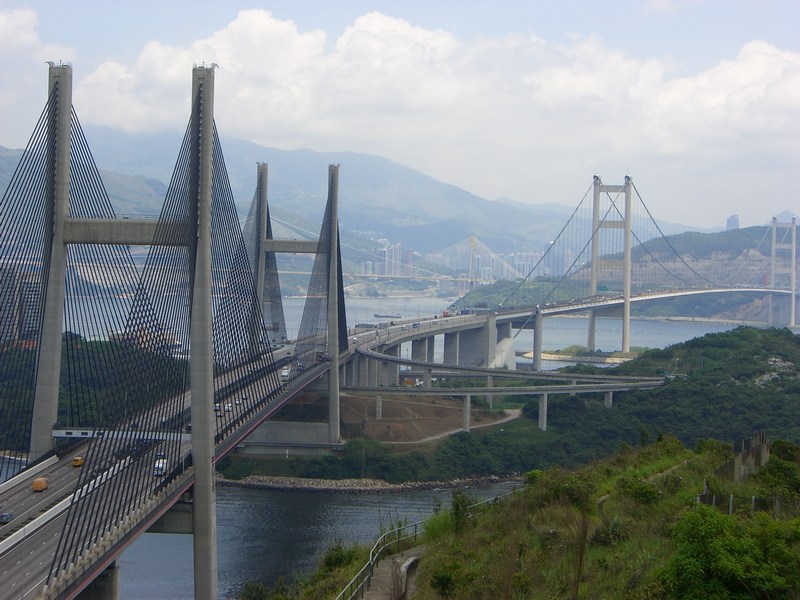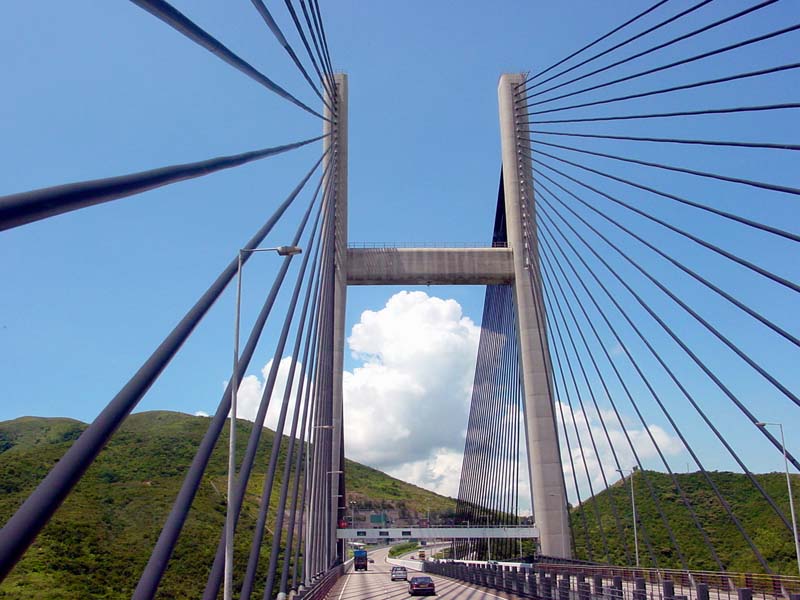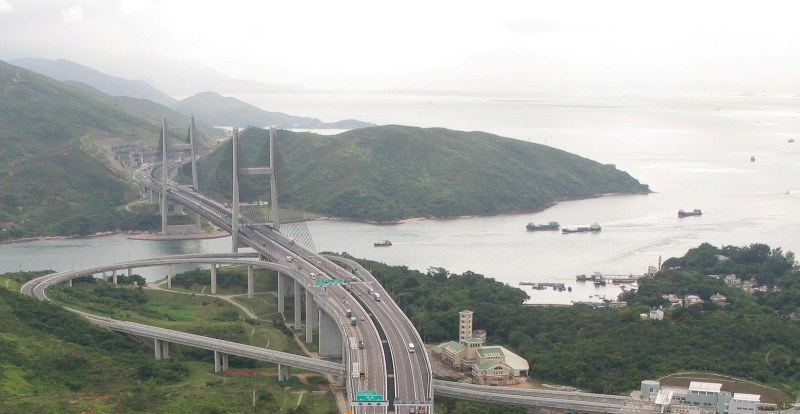| |||||||
Europe
North AmericaSouth AmericaAsiaAustralia and OceaniaAfrica |
Смотрите также: Kap Shui Mun Bridge The Kap Shui Mun Bridge in Hong Kong was the longest cable-stayed bridge in the world that transports both road and railway traffic (superseeded by Oresund Bridge in 2000, with a 490m main span), with the upper deck for motor vehicles, and the lower deck for both vehicles and the MTR.
Kap Shui Mun Bridge Other name KSMB Carries 6 lanes of roadway (upper), 2 MTR rail lines, 2 lanes of roadway (lower) Crosses Kap Shui Mun Locale Lantau and Ma Wan Design Double-decked cable-stayed bridge Total length 750 meters Width 32.5 m Longest span 430 meters Clearance below 47 meters Opening date 1997
Span Lengths The bridge was completed in 1997. The total length of the Kap Shui Mun Bridge includes a 70 m approach span on the Lantau side. A column in each of the back spans of the cable stayed bridge makes four 80 m spans to add to the 430 m main span. This brings the total length to 820 m. The 503 m Ma Wan Viaduct was constructed under the same contract as the KSMB. The viaduct connects the KSMB to the Tsing Ma Bridge, thus forming the Lantau Link that was built to provide access to the new airport. The navigation clearance of 47 m is part of the reason that the H-shaped towers are 150 m tall.
The Kap Shui Mun Bridge is not symmetrical in that the 160 m back span length (80 m + 80 m) is less than half of the main span length (half of 430 m is 215 m). To provide the balance that symmetry will normally provide, the bridge has composite cross sections. The central 387 m of the main span uses steel composite with concrete to make the cross section lighter. The back spans and the remaining main span are concrete cross sections. Using the lighter steel cross section in the majority of the main span serves to equalize the horizontal forces on the towers and balance the bridge. Because the lower deck carries both rail and traffic, the cross section is designed as a Vierendeel truss. This means that there are no diagonal members in the cross section and that vehicles and rail cars drive through the openings provided by the Vierendiel design. Comments: 0 |
|
|||||










































